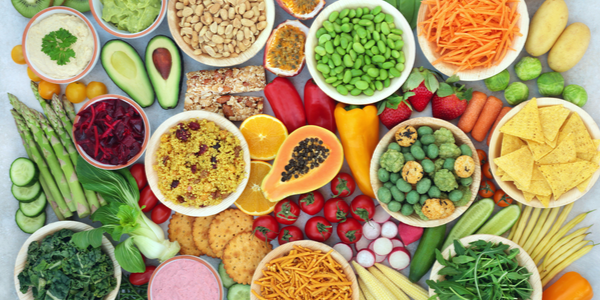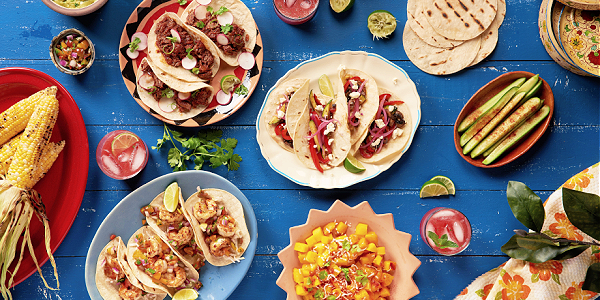
Plant-based foods are commonly known to offer polyphenols but some also provide phytosterols. Sometimes called plant sterols and stanols, they are a key structural component of plant cell membrane walls known to help lower cholesterol levels.
Stay tuned to learn the most important facts about plant stanols and sterols.
What Are Plant Sterols and Stanols?
Plant sterols and stanols referred to as phytosterols are a group of molecules closely related to cholesterol. They are naturally found in a variety of plant cell walls and added to some dietary supplements and processed foods like margarine. The most common ones are beta-sitosterol, campesterol, and stigmasterol.
Plant foods with sterols and stanols in high amounts include:
• Nuts and seeds - almonds, cashews, hazelnuts, macadamia, pistachios, pumpkin seeds, sunflower seeds
• Fruits - apples, apricots, avocados, bananas, berries, oranges, pineapple
• Vegetables - artichokes, asparagus, broccoli, cabbage, cauliflower, celery, green beans, sweet potatoes
• Beans and legumes - chickpeas, lentils, peanuts, soybeans
• Oils - argan, olive, sesame, sunflower
• Grains - brown rice, oat bran, wheat germ
• Spices - paprika, sage, thyme
Fortified foods with high amounts of phytosterols are: orange juice, cereals and grains, margarine, yogurt drinks, granola bars, aloe vera juice, vegetarian or vegan food products
Note that the National Cholesterol Education Program suggests consuming two grams of plant sterols and/or stanols on a daily basis, especially for those with high cholesterol levels. It turns out that about three servings of high phytosterol foods/day can reduce cholesterol up to 20 points!
How to Get More Phytosterols In Your Diet
Increase plant sterol consumption and manage cholesterol levels by:
• Sprinkling sesame or sunflower seeds on stir-fries, atop salads or grain bowls
• Snacking on nuts and/or seeds
• Using olive oil as a salad dressing
• Cooking with olive or sesame oil
• Consuming almond butter with fruit, on toast, or in oatmeal
• Spicing up meals with sage and paprika
• Eating beans and legumes as the main protein source of a meal
• Aiming to eat 5-9 servings of fruits and vegetables daily
Potential Health Benefits of Phytosterols
The structure of plant sterols is quite similar to naturally-occurring cholesterol. When present in the digestive tract, they compete and can block the absorption of animal-based dietary cholesterol. Thus, instead of cholesterol accumulating in the arteries and potentially causing damage to blood vessel walls, it is excreted from the body as waste.
Due to their blood cholesterol-reducing effects, phytosterols are therefore also associated with reducing the risk of some chronic health conditions such as heart attacks and cardiovascular disease, metabolic syndrome, and stroke.
In fact, consuming numerous servings of daily phytosterols is linked to lowering total cholesterol up to 10% and bad or LDL cholesterol levels up to 14%, especially when paired with other cholesterol-lowering strategies like eating less trans and poor quality saturated fat.
Furthermore, some studies show that medications aimed at lowering cholesterol levels called statins work more effectively when higher amounts of plant sterols and stanols are consumed.
Some studies suggest that eating high amounts of phytosterols can lower the risk of breast, liver, lung, ovarian, prostate, and stomach cancers. However, participants in these studies were given highly concentrated amounts of these sterols that exceed a normal amount from a diet. Thus, more research is needed to fully establish this connection.
While the majority of foods naturally high in phytosterols are also antiinflammatory and provide plenty of other micronutrients, fortified foods with plant sterols are not so much. In fact, high consumption of margarine, vegetable and seed oils, and sugary cereals is generally associated with poor health outcomes and their phytosterol content does not outweigh their more negative effects.
As with everything nutrition-related, moderation is key. But plants that naturally contain these phytosterols are much more beneficial than fortified versions.
In Summary
The six most important things to remember about plant sterols and stanols include:
1. Phytosterols are a structural component of plant cell membrane walls.
2. Plant sterols and stanols biologically look like cholesterol.
3. These compounds compete with cholesterol absorption and therefore can block it and reduce total and bad LDL cholesterol levels.
4. They are naturally highest in plant foods like veggies, fruits, nuts, seeds, grains, and oils.
5. Fortified foods with phytosterols are less effective and more inflammatory.
6. Eat three servings of phytosterols daily to reap the most benefit.
References:
Link R. Phytosterols: What Are They, and Do They Have Downsides? Healthline. Updated October 28, 2021. https://www.healthline.com/nutrition/phytosterols-benefits-and-downsides#bottom-line.
Phytosterols & Cholesterol. Cleveland Clinic. Reviewed October 5, 2019. https://my.clevelandclinic.org/health/articles/17368-phytosterols-sterols--stanols.







